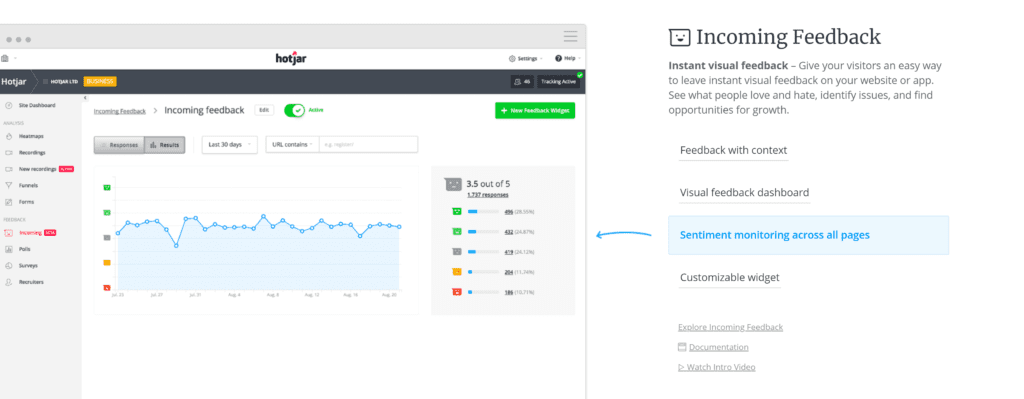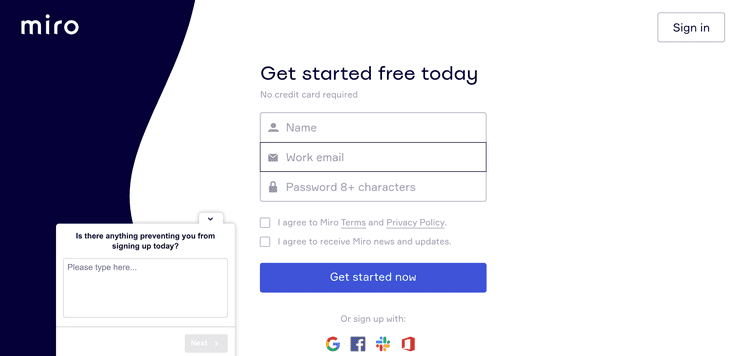7 Ways to Prioritize Continuous Quality for Your App

Continuous quality refers to the practice of continuously improving your software product as well as the way that you ensure its quality. In essence, it means making your product better and your processes more efficient.
As a product team, you not only want to release new features but you also want to make the user experience of your product is of higher quality.
Why? Because retention is the new acquisition. It costs 4 to 10 times more to acquire a new customer than to retain an old one.
By implementing continuous quality you…
- Increase customer satisfaction and retention
- Increase customer referrals and word of mouth
- Reduce churn
- Reduce negative reviews, customer complaints, and negative word of mouth
- Fulfill your promise to customers regarding the main value your product provides (as opposed to causing feature overwhelm)
Now that we can see why this is critical to software development, let’s take a look at how you can actually prioritize continuous quality and make it a reality.
Continuous improvement causes us to think about upstream process not downstream damage control. – Victoria L. Bernhardt
1. Improve communication between QA and product
One of the best ways to deliver quality to customers is to improve communication between testers and developers. To build as agile as possible, developers need to hand off small feature components to testers, instead of one large ready-to-ship build at a time.
Improving communication can mean a few different things:
- Working together to build a testing plan while development is taking place
- Shifting left, and getting new functionality to QA as soon as possible
- Product team helping QA better identify how new features affect the product as a whole
- Alignment and agreement on issue prioritization and categorization
2. Test continuously
It’s time to test continuously. This means combining test automation with more realistic, customer-centric testing like exploratory methods. With continuous testing, you don’t just test before shipping something new. You test constantly, all of the time.
Of course, with new releases, you might do a big burst of testing, but you also need to have testing strategies in place that don’t stop. A networked testing approach is a smart way to manage continuous testing because you can increase and decrease the amount of expert manual testing as needed.
For teams using CI/CD approaches, networked testing can help manage unit, visual, functional, and other testing types and can integrate with DevOps processes so that quality is ensured before release.
Learn more about how networked testing can help you test continuously.
3. Reiterate on your regression testing process
A regression testing strategy seeks to identify what areas of the product have been affected by a new release, and then cover the high-risk areas thoroughly, and the lower risk areas to a lesser degree so that when new features are pushed live, new bugs aren’t introduced to old components of the product.
With that goal, regression testing is clearly essential to continuous quality. But continuous quality isn’t just about the product, it’s also about the process. That’s why you should consider the way that you manage regression testing, and seek to reiterate on it.

Here are some ways you can update your regression testing process:
- Don’t just rely on automation for regression testing. Otherwise, you risk not catching the bugs that your users are experiencing. Manual, exploratory testing is key to the quality of both new and existing functionality.
- Better prioritize the parts of the app that are likely to be most affected. Reconsider how you allocate and assign resources during regression testing bursts. For example, if you make improvements in a calendar feature, that might affect another area of the product, perhaps the CRM feature. Performing in impact analysis for any change helps you build a better regression test.
- Create a robust Root Cause Analysis process for any problem that escapes your regression tests. If you notice an influx of customer support tickets following a release, make sure you understand what caused the problem, and how that problem escaped your testing process. Then, make the necessary improvements.
4. Implement sentiment monitoring to catch dips in satisfaction
Do you know how your customers feel about your app or product as a whole? What about certain pages, screens, or features?
It’s important to set a benchmark for customer satisfaction for each major section of your site or product. You need to know the average satisfaction score and monitor it live. If it falls below the average, you can set up notifications. Then, do some exploratory testing and talk to customer service reps to figure out what the problem might be and escalate the issue.
For browser-based web applications, e-commerce sites, and other types of websites, you can easily set up sentiment monitoring with a tool like Hotjar. For mobile apps, you can use something like Mopinion, Confirmit, or custom-build an NPS score collection feature.
5. Actively collect customer feedback
Setting and monitoring benchmarks for customer satisfaction aren’t the only ways to involve users in your continuous quality improvement efforts. You can also collect customer feedback in a more active way. So many companies are only collecting feedback via customer support tickets when things go wrong.
But quality is also about slight improvements, not even new features, but UX and usability improvements too.
Here are some ways to get more user feedback:
- Request text feedback after customers submit their sentiment.
- Collect data on clicks and gestures so you can find the cause for an increase in rage clicks or other signs of frustration.
- Implement a request for feedback in the downgrade or cancel user flow, and in the confirmation email (bugs, feature overwhelm, and confusing UX are so often the cause).
- Run a/b tests for changes made to important app pages and onboarding flows to gauge improvements to completion rates.
Here’s an example of a request for feedback on a sign-up page.

Similar requests can be added to pages for new in-app features or in cancellation flows.
6. Test on the weekends (without having to)
Continuous quality needs to happen around the clock, but that doesn’t mean that your QA team should never get a break. You can employ the help of networked testers to keep testing your app while your team is off.
Major testing should occur in the crevices of core product and engineering team work periods. For many companies, this means large-scale testing primarily occurs overnight and/or on weekends — in relation to primary engineering team time zones. To optimize this approach, a multilocation team of testers is often optimal. – Steve Semelsberger, CEO of Testlio
Weekend and nighttime testing have a number of benefits:
- Gets you ready for early week releases so you can ship things faster
- Allows you to get your app tested during different levels of usage
- Helps you find bugs while your team isn’t working
- Lets you test your app in different network environments
Learn more about how to get expert testers working on your app during your off time.
7. Better identify product risk upfront
And finally, to improve not only your product’s quality but also your quality assurance processes, you can strive to do a better job of deciding what builds are too risky and what is worthwhile. You don’t want to build features that put too much strain on your QA resources and cause too many problems without being worthwhile.
Of course, when something is on your roadmap, it’s there for a reason. Likely, customers have been demanding it or you’re seeking to innovate faster than competitors. But you might be able to build it in a less risky way. For example, you can build in more intuitive gestures and simpler user flows.
Consider how to build new functionality that will have fewer bugs and issues than the first few feature ideas your team comes up with.
Push yourselves hard to make quality part of the initial decision-making, instead of an afterthought.
At the end of the day, your customers are counting on you to deliver an app that works exactly how they want, and that even delights them. Make sure that as you pursue new, innovative features, quality doesn’t go forgotten.
Testlio offers networked testing, fully managed expert testers working in burstable teams in distributed locations.
